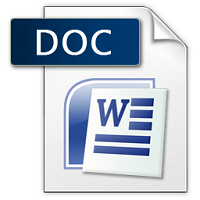₹198.00
Scroll down for Match your questions with Sample
Note- Students need to make Changes before uploading for Avoid similarity issue in turnitin.
Another Option
UNIQUE ASSIGNMENT
0-20% Similarity in turnitin
Price is 700 per assignment
Unique assignment buy via WhatsApp 8755555879
Description
| SESSION | AUG-SEP’23 |
| PROGRAM | MASTER OF BUSINESS ADMINISTRATION (MBA) |
| SEMESTER | IV |
| COURSE CODE & NAME | DFIN402 – TREASURY MANAGEMENT |
Assignment Set – 1
- Being Treasury Head of your company, your department assumes a strategic role and undertake profit-making activities within the stipulated risk framework so as to reduce the cost of funds. Briefly explain major activities a treasury department will be engaged in achieving above objectives.
Ans 1.
The treasury department of a company plays a pivotal role in managing its financial resources and strategies. Its activities are multifaceted, aiming to optimize the company’s profitability within a defined risk framework. This essay outlines the key activities a treasury department undertakes to achieve these objectives.
Cash and Liquidity Manageme
Its Half solved only
Buy Complete from our online store
https://smuassignment.in/online-store/
MUJ Fully solved assignment available for session SEPT 2023.
Lowest price guarantee with quality.
Charges INR 198 only per assignment. For more information you can get via mail or Whats app also
Mail id is aapkieducation@gmail.com
Our website www.smuassignment.in
After mail, we will reply you instant or maximum
1 hour.
Otherwise you can also contact on our
whatsapp no 8791490301.
- Briefly discuss major hedging tools for covering foreign exchange risk.
Ans 2.
Hedging is a crucial strategy for businesses and investors to manage and mitigate foreign exchange (forex) risk, which arises from fluctuations in currency exchange rates. This risk can impact the profitability and financial stability of entities engaged in international trade or investment. To address this risk, various hedging tools and techniques are available. In this discussion, we will briefly
- Classify major components of Debt Market. Elaborate on advantages of investing in Government Securities (G-Secs).
Ans 3.
Government Securities
The debt market, also known as the fixed-income market, plays a crucial role in the world of finance. It encompasses a wide range of financial instruments that involve borrowing and lending, and it provides opportunities for both individuals and institutions to invest their money. In this discussion, we will classify the major components of the debt market and then delve into the advantages of investing in
Top of Form
Assignment Set – 2
4.a)Elaborate on VaR (Value at Risk) for measuring market risk.
- Briefly Explain Historical Simulation method.
- For a Rs.100,000,000 portfolio, the expected 1-week portfolio return and standard deviation (Volatility) are 0.00188 and 0.0125, respectively. Calculate the 1-week VaR with a 95% confidence level (z score value for 95% confidence level is 1.65) using parametric method.
Ans 4.
- a) Elaborate on VaR (Value at Risk) for measuring market risk:
Value at Risk (VaR) is a widely used risk management measure that quantifies the potential loss an investment or portfolio of assets may incur over a specified time horizon and confidence level. It is a critical tool for assessing and managing market risk, which is the risk associated with adverse movements in
- Differentiate funding liquidity risk from market liquidity risk. Discuss any three methods to measure Funding Liquidity Risk.
Ans 5.
Liquidity risk is a critical concern for financial institutions and investors alike. It encompasses two main components: funding liquidity risk and market liquidity risk. In this discussion, we will differentiate between these two types of liquidity risk and explore three methods to measure
- Explain techniques of asset liability management used to manage treasury risks.
Ans 6.
Asset Liability Management (ALM) is a crucial function within financial institutions, particularly in the treasury department. It involves the strategic management of assets and liabilities to mitigate risks and ensure the stability of the organization’s financial position. In this article, we will delve into the techniques of asset liability management that are employed to manage treasury risks.
- Gap Analysis:


